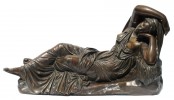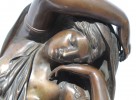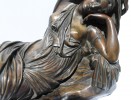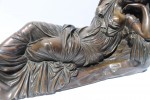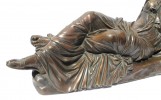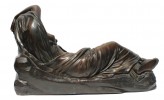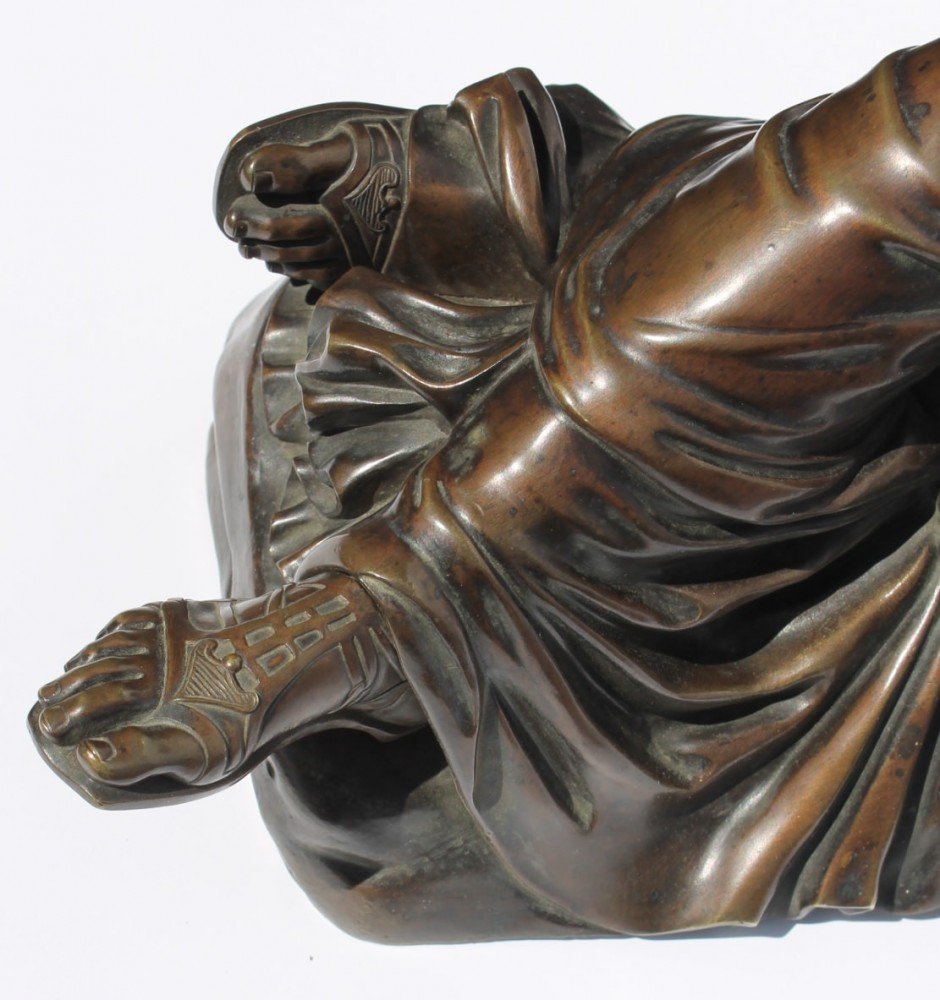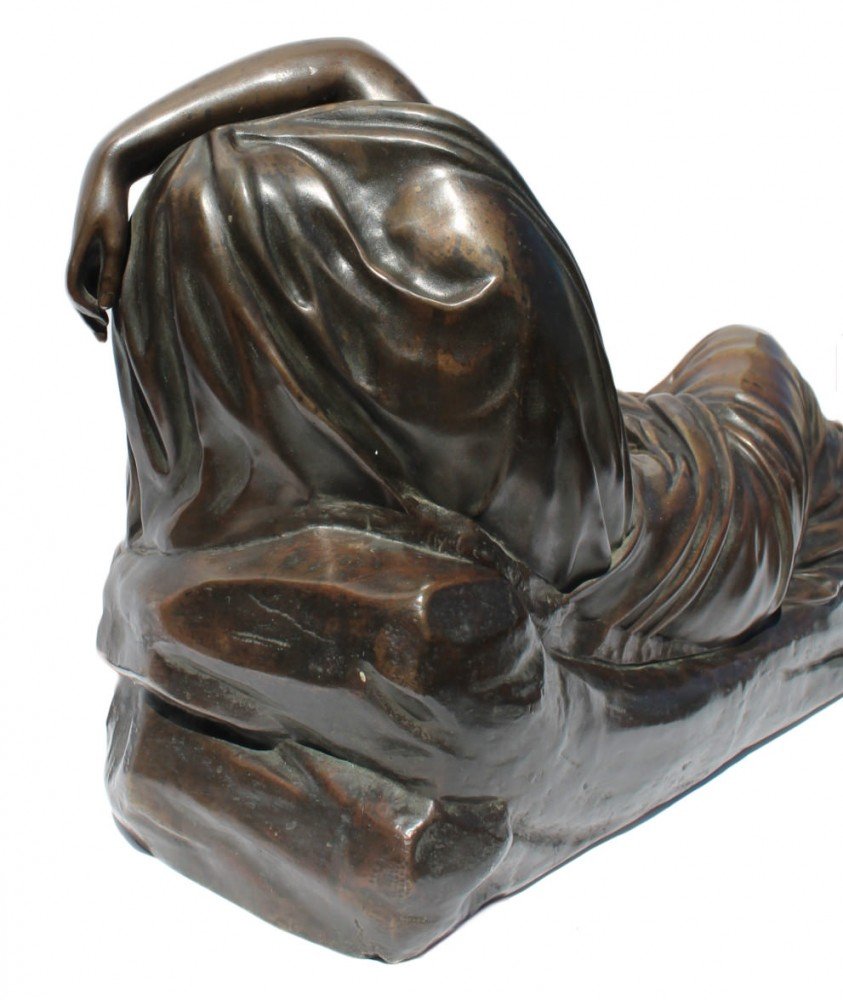Medium: bronze
Signature: unsigned, foundry mark inscribed on base DROZ - Jean Pierre Droz (French, 1746-1823)
Dimensions: 11.5in. h x 19in. w
Description:
From the Roman copy after the Hellenistic Pergamene School original of the 2nd century BC, and one of the most beloved sculptures of antiquity, representing Ariadne, the daughter of King Minos of Crete, sleeping on the island of Naxos, abandoned by her lover Theseus. Ariadne, having fallen asleep, awakes to find her lover sailing away on the horizon. From Catullus... “False Theseus, is this why you take me from my father’s land, / faithless man, to abandon me on a desert shore? / Is this how you vanish, heedless of the god’s power, / ah, uncaring, bearing home your accursed perjuries? / Nothing could alter the measure of your cruel mind? / No mercy was near to you, inexorable man, / that you might take pity on my heart? / Yet once you made promises to me in that flattering voice, / you told me to hope, not for this misery / but for joyful marriage, the longed-for wedding songs, / all in vain, dispersed on the airy breezes. / Now, no woman should believe a man’s pledges, / or believe there’s any truth in a man’s words: / when their minds are intent on their desire, / they have no fear of oaths, don’t spare their promises…”
Numerous copies and reductions were made. Once known as Cleopatra, for the serpent bracelet she wears on her arm, but this confusion was settled when Johann Winckelmann noted that the serpent was actually a bracelet, and that there was no reason to call her Cleopatra; she was a nymph, or Venus. Famous owners of the subject were the artist Primaticcio, Francis I, Nicholas Poussin, Louis XIV, and Thomas Jefferson. Jefferson’s small marble copy remains in a hallway at Monticello.


